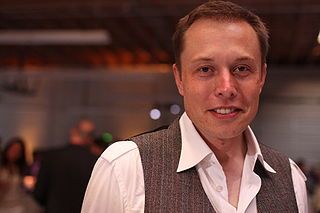From Guest Blogger Blake Meredith: What $11.9 Billion Can Do For The Earth And You | The Innovations Of Elon Musk

Those hands and that mind belong to Elon Musk, a South African-American entrepreneur and legendary founder of PayPal, Tesla Motors, SpaceX and other ventures. Not content with merely re-imagining the electric car and potentially slashing worldwide automobile emissions, Musk has gone on to revolutionize local power generation, space travel, mass transit systems and more.
Tesla Motors | Home Battery
A coast-to-coast DC supercharger network, a record-best automobile rating from Consumer Reports, an electric luxury sedan that can sprint to 60 mph in 3.2 seconds – Tesla has a longer record of success than Bill Belichick. Musk intends to add a new one: a consumer home battery pack that could, fully charged, power the average single-family home for a week. Such technology could upend the utility monopolies and free homeowners, those dwelling in the Big Apple or Big Sky Country, from the copper chains of the grid.
On February 12, 2015, Musk announced, “We have the design done and it should start going into production probably about six months or so.” Beyond saying, “It’s really great,” Musk has remained mum about the battery’s technical details, although many suspect it is based off the lithium-ion batteries currently used to backup SolarCity’s residential photovoltaic power systems. Many of those batteries are or will be manufactured at Tesla’s Pentagon-sized “gigafactory,” a lithium-ion cell factory based in Reno, Nevada. Musk wheedled $1.4 billion in state incentives out of Nevada just for that.
SpaceX | Climate Observatory & Global Internet
SpaceX captured its first NASA contract back in 2006, when it signed up to deliver cargo to the International Space Station and clean up space trash. Since then, NASA and SpaceX have become thick as thieves.
On February 11, 2015, thousands of tons of RP-1 kerosene propellant blasted out of a SpaceX Falcon 9 rocket as it departed Cape Canaveral Air Force Station carrying NASA’s $340 million Deep Space Climate Observatory (DISCOVR). After letting loose DISCOVR, the first stage of the rocket landed safely, softly, in the Atlantic Ocean. SpaceX hopes to design a fully reusable rocket and therefore eradicate space debris from satellite orbits. DISCOVR, en route to its loose orbit one million miles from terra firma, will alert National Oceanic and Atmospheric Administration (NOAA) officials of inclement space weather that could disrupt satellite communications.
Through SpaceX, Musk is also engineering a program that will attempt to deploy 4,000 satellites (using many of the same principles as the satellites used by hughesnet internet) so that Musk can deliver global internet connectivity (in much the same way that Google and Facebook are trying to bring the world online) .
Hyperloop | High-Speed Mass Transit
Hyperloop began as a whitepaper published on the websites of SpaceX and Tesla Motors. Musk called for a Star Trek-type transportation system, a subway system of partial-vacuum tunnels with a high-speed train replenished by wind and sun capable of hurling people at speeds up to 760 mph. To commute from Los Angeles to San Francisco would take 35 minutes. Cost would be $6-$7.5 billion.
Three separate companies – MathWorks, OpenMDAQ and Ansys Corporation – ran computer simulations. With modifications, they said, the Hyperloop could work. The primary problems would be preventing supersonic airflow and, most importantly, eliminating the tiny track imperfections that, at 500-700 mph, would send passengers ricocheting about like bouncy balls. In January 2015, Musk said that he would build a 5-mile test Hyperloop where universities could test pod designs. Such mass transit systems would reduce acid rain from nitrous oxides, clean up city smog, reduce large-particle brake dust pollution, and decrease the greenhouse gas effects from automobile overuse.
SolarCity | Renewable Power Generation
It is no secret that Elon Musk is a fervent fan of vertical integration. Tesla Motors, for instance, manages the concept, design, manufacturing and sale of its vehicles. In June 2014, Musk tried the same thing with his pet project, Solar City, a company run mostly by CEO and co-founder Lyndon Rive.
SolarCity rocketed to fame when it pioneered solar power leases, a pragmatic business model where customers leased photovoltaic solar panels for, on average, 20 years with little or no money paid upfront. With SolarCity rising like its namesake star, Musk and Rive decided it needed another kick in the pants.
SolarCity is building another “gigafactory” in Buffalo, New York. Utilizing the manufacturing expertise of newly acquired company Silevo, the plant has a planned capacity of one gigawatt of solar panels every year, making it the largest such manufacturer in the United States. SolarCity broke ground on the project in September, just three months after its initial announcement.
Catchwords like “environmentally-friendly” and “sustainability” are euphemisms for a simpler idea: a clean earth. An unexploited earth. Just earth. By paving the way for independent power generation and energy-efficient transit, Elon Musk might just be the earth’s White Knight.

[…] via From Guest Blogger Blake Meredith: What $11.9 Billion Can Do For The Earth And You | The Innovations…. […]